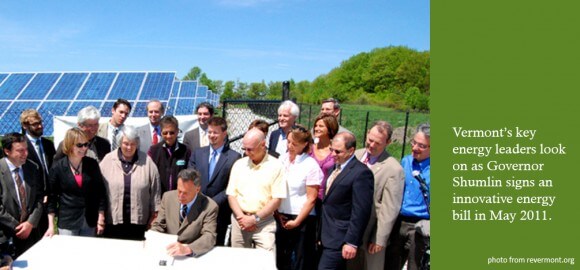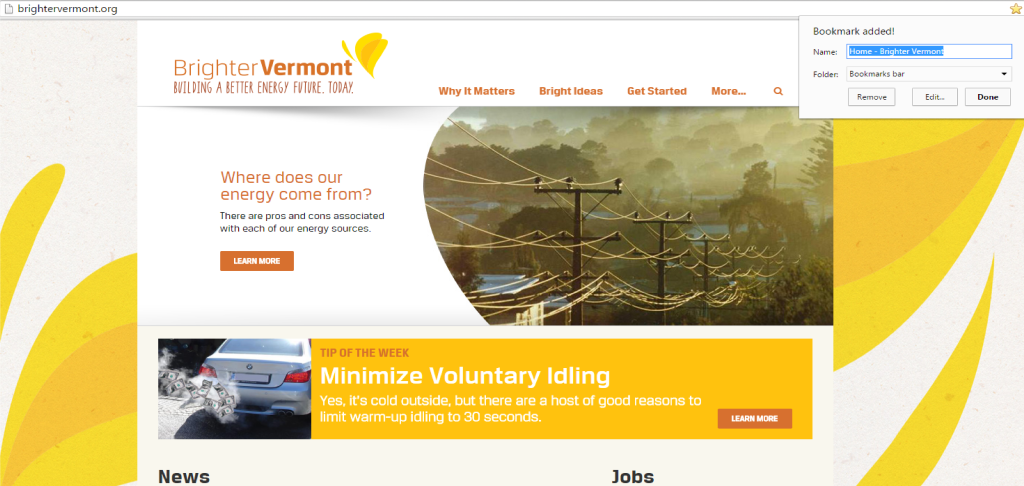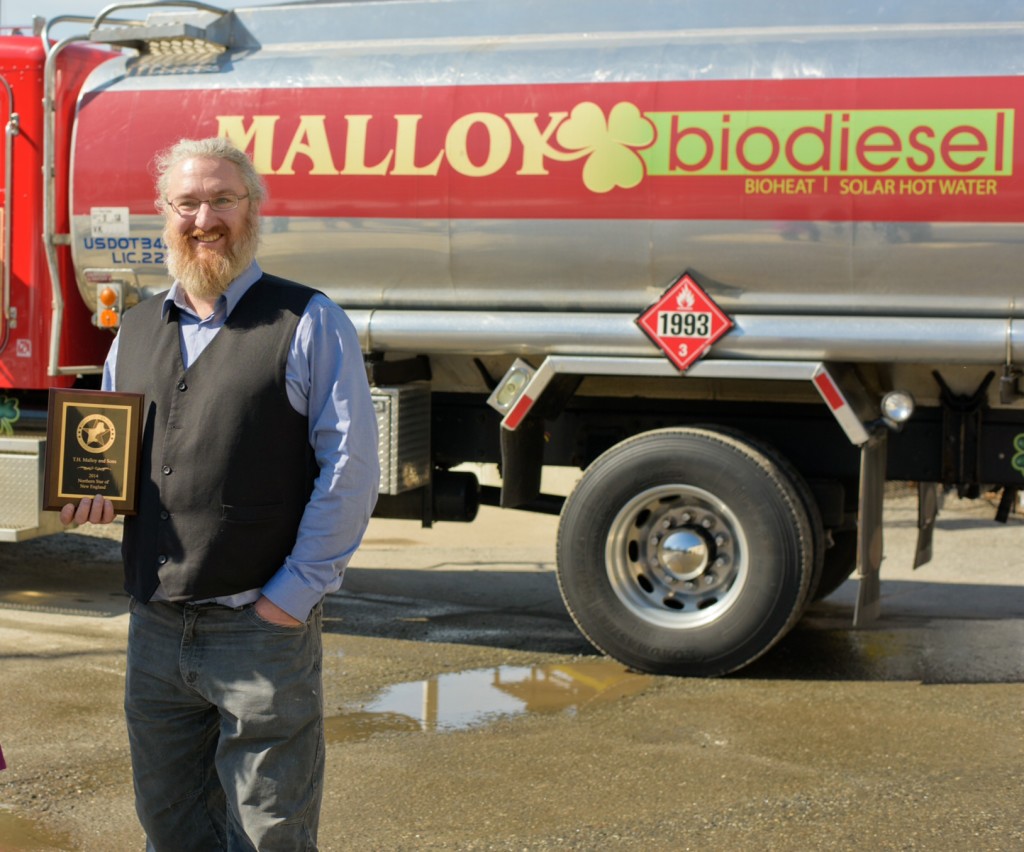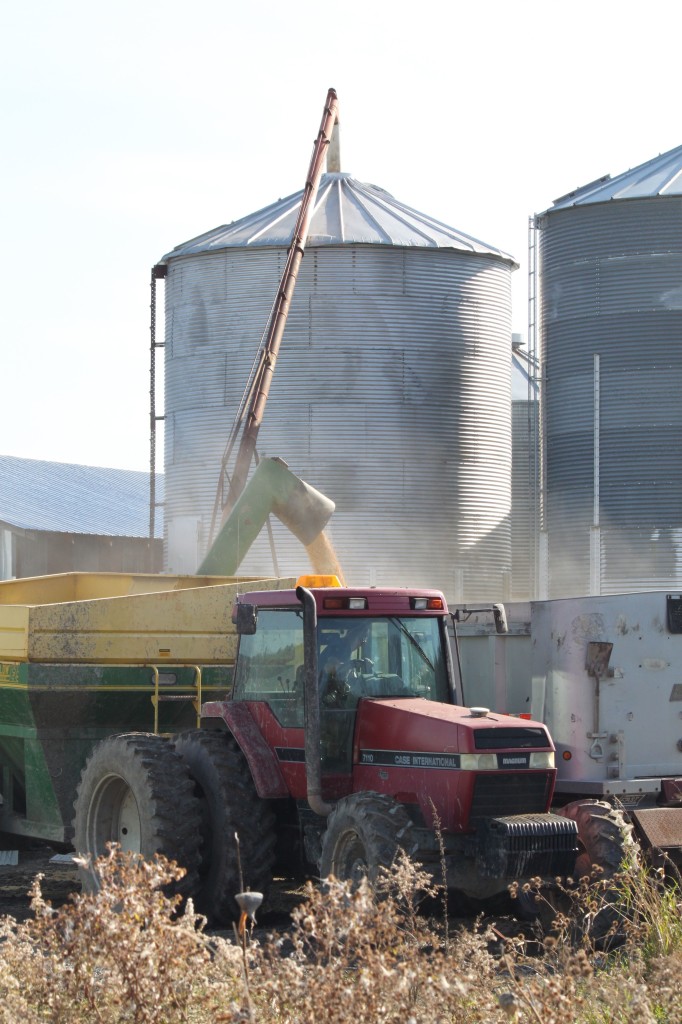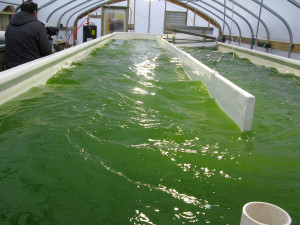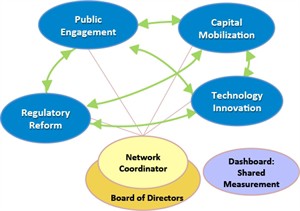
The EAN’s 4 Key Leverage Points of capital mobilization, public engagement, technology innovation, and regulatory reform
The Energy Action Network (EAN) is a community of a community of Green Mountain State stakeholders working to change the Vermont energy landscape “to end Vermont’s reliance on fossil fuels and to create clean, affordable energy and secure electric, heating, and transportation systems for the 21st century.” Their goals are consistent with the State of Vermont 2011 Comprehensive Energy Plan, which aims to meet 90% of Vermont’s energy needs through efficiency and renewable sources by 2050.
EAN has identified a series of pathways for Vermont for Vermont to accomplish the paradigm shift of 90% renewables by 2050. Membership is structured into working groups focused on four “leverage points” capital mobilization, public engagement, technology innovation, and regulatory reform. Current projects include alterations to Act 250, changes in zoning laws, programs to promote bringing rental properties into efficiency standards, and assessing current land use for its potential for bioenergy and solar projects.
One notable awareness vehicle, Brighter Vermont, encourages Vermonters to change the way common energy use and think more about where energy comes from. Read more about how Brighter Vermont helps change energy behavior. EAN also works with municipalities and recently helped Montpelier plan for a 15 year track to become the first state capital to accomplish all of its energy needs with renewable energy. On February 12, 2015 the Montpelier City council accepted and endorsed the plan to make Montpelier a “net zero” city.
Currently, EAN is working with the Vermont Sustainable Jobs Fund to expand the Vermont Energy Atlas website into the Community Energy Dashboard. The Dashboard will enable communities to understand their energy use and make clean energy choices and investments across all energy sectors—heating, transportation, and electricity. The Dashboard will make energy use visible and understandable to consumers and communities by showing town-level progress toward Vermont’s 90% renewables by 2050 goal. The Dashboard will also shows existing and potential renewable energy sites (solar, wind, hydro, biomass). We will provide updates as they develop. Stay tuned into the Vermont Bioenergy Field Notes blog and visit the Energy Action Network website to learn more.
20 Apr 2015
Getting Smart About Vermont Energy
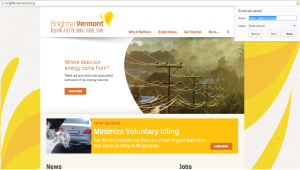 The State of Vermont 2011 Comprehensive Energy Plan calls for 90% of Vermont energy needs to be met through efficiency and renewable sources by 2050. As Vermont residents witness continued high numbers in clean energy jobs, and advanced renewable energy legislation they will also need to take responsibility for Vermont to meet these goals, as every Vermonter will need to contribute in some way for Vermont to meet this ambitious goal. Enter Brighter Vermont, an action oriented program of the Energy Action Network, to help everyday Vermonters rethink where their energy comes from, how they use it in their daily lives, and what they can do to help the state reach its 90% by 2050 goal.
The State of Vermont 2011 Comprehensive Energy Plan calls for 90% of Vermont energy needs to be met through efficiency and renewable sources by 2050. As Vermont residents witness continued high numbers in clean energy jobs, and advanced renewable energy legislation they will also need to take responsibility for Vermont to meet these goals, as every Vermonter will need to contribute in some way for Vermont to meet this ambitious goal. Enter Brighter Vermont, an action oriented program of the Energy Action Network, to help everyday Vermonters rethink where their energy comes from, how they use it in their daily lives, and what they can do to help the state reach its 90% by 2050 goal.
The Brighter Vermont website is packed with testimonials and videos shared by individuals who describe the financial decisions they are making to positively affect the environment, Vermont’s economy, and their wallets. A family in Rutland reports on small home improvement they have made to keep out the Northeast cold out and share a video about lowering energy costs, with the help of Green Mountain Power, by properly weatherizing their home, changing to energy efficient LED bulbs, electing for a heat pump, and adding solar panels. The overall transition has made them a more energy conscious family and was achievable with a ten year loan the family is pleased to see being offset by reduction in energy costs.
A family in Burlington’s journey towards reducing their carbon footprint is documented in a fun testimonial video where the family picks out their first electric vehicle. They were able to replace one of their family vehicles with a zero emission Nissan Leaf (hyperlink to video) that was available with an affordable two year lease. The switch from a classic Vermont staple vehicle, a Subaru, to the Leaf, has helped the family not only save money at the gas pump, but the, as the family reports, electricity used to charge the vehicle comes from renewable energy. They enjoy educating their friends and neighbors about this carbon footprint transition.
Brighter Vermont also hosts ways for businesses, schools, and towns to become more efficient and promote renewables in their community. Methods for how schools and businesses have become more efficient by transitioning to modern wood heating. A featured video produced by VEIC (hyperlink) features 54 schools from across Vermont currently heating with wood chips and pellets which provides heat for nearly one third of k-12 students across Vermont. Our own Vermont Bioenergy Initiative Vermont on-farm energy videos are also featured for farmers to learn more about the emerging areas of oilseed, grass, and algae biofuel.
There is much that needs to be done in the fight against climate change and moving Vermont away from its reliance on fossil fuels. While this road can be daunting, it is important to remember that we can all make small changes that will benefit us, our community, and our state. And the Brighter Vermont website provides a fun and interactive platform for individuals, families, businesses, and institutions to learn how to contribute and share these efforts with others so Vermont can take steps towards meeting our renewable energy goals for our future.
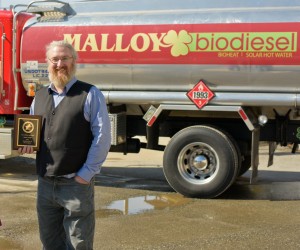
Jim Malloy, of Plainfield, Vermont, is recognized for displacing petroleum with biodiesel in New England’s transportation sector.
Jim Malloy, of Plainfield, Vermont, is being recognized for his contributions to reducing the use of petroleum fuel in the transportation sector. His business, TH Malloy and Sons in Newport, Rhode Island, is being recognized with the New England Northern Star Award as one of the top fleets for reducing their emissions through the use of biodiesel made from recycled restaurant oil.
The 75-year-old family business is a distributor for Newport Biodiesel, also of RI, who produces biodiesel from recycled restaurant oil. Both companies are being recognized with the award.
Each recipient of the award demonstrated a deep commitment to the goals of the Clean Cities program through use of alternative fuels, alternative fuel vehicle purchasing, and petroleum reduction practices. The designation as a Northern Star required that the fleets be a stakeholder in their local Clean Cities Coalitions and that they meet a list of criteria showing their commitment to Clean Cities’ initiatives.
Malloy introduced biodiesel fuel into his RI company’s distribution fleet and has helped 4,000 customers replace oil with biodiesel. His efforts have displaced nearly 4 million gallons of oil in the past seven years. Malloy is also being recognized for the impact he has had on reducing emissions statewide by working in the RI legislature to make biodiesel a more affordable fuel option.
Replacing petroleum fuel with biodiesel that is produced locally from recycled cooking oil has the benefits of increased energy security, stronger local economies, improved air quality, and reduced contributions to global climate change.
“I am honored to be recognized,” says Malloy. “I’m passionate about recycling waste and creating an outlet for less expensive and cleaner-burning domestically-made fuel that displaces petroleum.”
Malloy is also owner of Black Bear Biodiesel in Plainfield, Vermont, which is a two-year-old restaurant oil collection recycling service and biodiesel distributor serving northern and central Vermont. The company plans to have drive-up fill-up stations at their Plainfield location in late May.
“I look forward to bringing this same passion for recycling and emissions reduction and petroleum displacement to Vermont as well, while at the same time saving locals money by providing a more efficient, cleaner fuel and an affordable replacement for petroleum,” says Malloy.
The other four recipients of the award are the City of Boston Massachusetts, the City of Nashua New Hampshire, Oakhurst Dairy in Maine and New Hampshire, and the University of Vermont.
The Northern Stars of New England program
was funded through a U.S. Department of Energy grant that identified barriers to the proliferation of alternative fuels and how to remove them. There are nearly one hundred Clean Cities Coalitions around the country whose purpose is to help reduce the use of petroleum, cut emissions, and promote alternative fuel options. The Northern Stars program was developed by the five Northern New England Clean Cities Coalitions and is just one of the ways that these coalitions promote the use of alternative fuels in fleets.
This project is funded by a U.S. Department of Energy grant awarded to Maine Clean Communities, a program of the Greater Portland Council of Governments (GPCOG), and other Northern New England Clean Cities Coalition grant partners.
More information on the Northern Stars program can be found on the Vermont Clean Cities Coalition website at www.uvm.edu/vtccc.
06 Apr 2015
Upcoming North American Bioenergy Events
Make sure to check on the Vermont Bioenergy Initiative website for more national bioenergy events as we will be updating this list!
- May
- June
- WasteExpo 2015 June 1-5, 2015 Las Vegas Convention Center
- 5th International Conference on Algal Biomass, Biofuels and Bioproducts. 7 – 10 June 2015. San Diego, USA
- BIO International Convention June 15-18, 2015. Philadelphia, PA
- Bioenergy 2015,June 23-25. Washington, DC
- GAI AgTech Week June 22-24, 2015 San Francisco, CA
- July
- 19th Annual Green Chemistry & Engineering Conference (GC&E). July 14-16, 2015. N. Bethesda, MD
- BIO World Congress on Industrial Biotechnology. July 19 – 22, 2015. Montreal, Canada
- EnergyPath 2015, July 20-24. Scranton, PA
- BioFuelNet Advanced Biofuels Symposium 2015. July 22 – 24, 2015. Montreal, Canada
- August
- September
- Switchgrass III. September 30 to October 2, 2015. Knoxville, TN
- 2nd International Conference on Past and Present Research Systems of Green Chemistry. September 14-16, 2015. Orlando, Florida
- Ag Innovation Showcase September 14-16, 2015 St. Louis, MO
- Algae Biomass Summit September 30-October 2, 2015 Washington, DC
- October
- November




